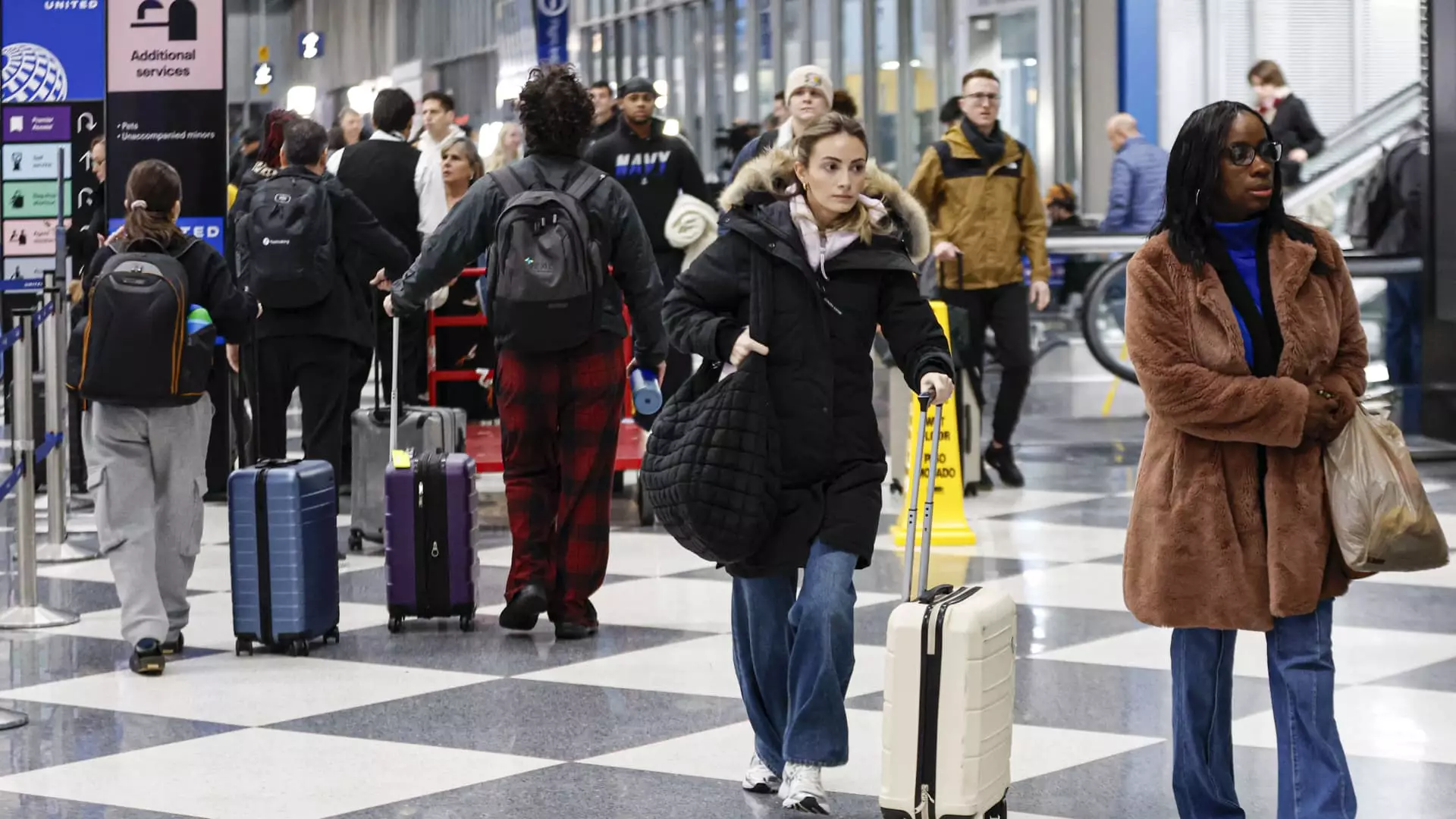As the aviation industry enters another year, consumers are bracing for a significant uptick in airfare, driven by a perfect storm of factors that highlight the airlines’ newfound pricing power. The fare-tracking platform Hopper recently reported that the average domestic airfare in the United States rose to $304 in January, marking a dramatic 12% increase from the previous year. This surge is indicative of strong demand for air travel, even during winter—a time traditionally seen as a lull in tourism activity. However, the rise in prices comes amidst limited capacity growth, forcing airlines to adjust their fare structures accordingly.
One of the critical contributors to this fare escalation is the delayed delivery of new aircraft from major manufacturers Boeing and Airbus. These delays, combined with existing air traffic constraints, have created a bottleneck effect that hampers airlines’ ability to expand services. The limited capacity has rendered airlines less able to absorb the demand, empowering them to implement higher prices.
Within this competitive landscape, certain airlines have faced more tumultuous conditions. A notable case is Spirit Airlines, which filed for Chapter 11 bankruptcy protection late last year. The airline has been forced to curtail its flight offerings dramatically as part of cost-cutting measures. Such reductions in capacity not only affect the airline’s operational viability but also ripple across the market, contributing further to reduced supply and increased prices.
In contrast, larger carriers have reported optimistic revenue forecasts, including American Airlines, which anticipates a 5% revenue increase over the first quarter compared to the same period in the previous year. However, this positive outlook is juxtaposed with the grim reality of stagnant capacity levels and cost increases arising from new labor agreements. American Airlines Chief Financial Officer, Devon May, acknowledged the anticipated rise in airfare while simultaneously addressing concerns over rising expenses.
Innovative carriers such as Breeze Airways are also altering the competition dynamics in the aviation sector. Breeze recently announced its first quarterly operating profit despite the overall industry challenges. Founder David Neeleman highlighted how conservative growth within the industry has created a favorable context for companies that can navigate these turbulent waters effectively. He noted, “The tide is lifting a lot of boats,” – a metaphor that reflects the interconnectedness of the industry where improved performance by one can inspire growth across others.
Alaska Airlines has also placed itself firmly within the group of optimistically forecasting airlines, expecting high single-digit revenue growth for the first quarter despite only a modest increase in capacity. Similarly, United Airlines impressed analysts with a projected earnings forecast that underscored the recovering domestic pricing environment—a positive outcome shaped by a strategic removal of unprofitable routes amid a rebound in business travel.
While domestic air travel is showing promising signs of recovery, large U.S. carriers are capitalizing on opportunities in international markets, particularly Europe. Delta Air Lines has reported exceptional off-peak travel results, seeing a mid-single digit revenue increase in its trans-Atlantic routes. As stated by Delta’s president, Glen Hauenstein, the demand for these routes benefits from a combination of strong U.S. consumer spending and expanded seasonal travel options, reinforcing that airlines are continuously adapting to market demands.
Furthermore, airlines are investing in enhancing their revenue streams through the introduction of premium seating options and additional onboard amenities targeting a more affluent customer base willing to pay extra for comfort. This strategy not only generates additional revenue but also signals a conscious shift toward prioritizing passenger experience in an increasingly competitive market.
The current landscape of the airline industry reflects a significant transition. With rising demand, limited capacity growth, and strategic operational decisions, such as the reduction of unprofitable routes, airlines are effectively leveraging their pricing power. As consumers prepare for potentially elevated travel costs in the coming year, the dynamics among carriers will continue to evolve, offering a blend of challenges and opportunities that will define the future of air travel. The interplay between consumer demand, operational efficiency, and pricing strategies will likely shape the direction of the aviation industry for months to come.


Leave a Reply